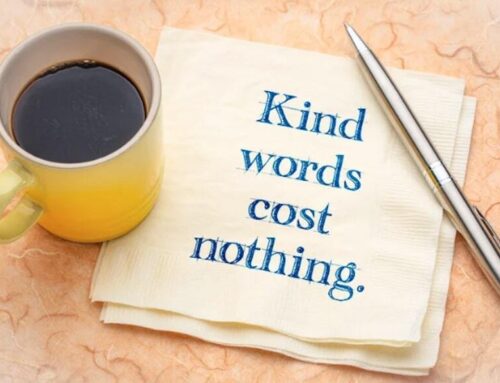
No matter which industry you’re in, conflict is a natural part of the collaborative process. However, while conflicts can threaten or destroy relationships, they can also be used to strengthen bonds and open channels of communication.
When running a business, it’s imperative to take a healthy approach to conflict and its resolution. Unfortunately, many companies view conflict as a significant problem, so they work hard to prevent it at every level, even if could be beneficial.
For that reason (among others), it’s best to invest in comprehensive conflict resolution training. When employees and supervisors know how to spot and resolve conflict as it arises, they’re better prepared for handling these situations and leveraging them to move the company forward.
But what is this training exactly, and how can it be applied across industries? Here’s everything you need to know.
What is Conflict Resolution Training?
Conflict resolution training is a process of teaching individuals (typically managers or supervisors) how to resolve conflicts that could arise within the workplace. The core elements of this training include:
- Assessment – Learning how to spot potential conflicts before they become huge problems for the business.
- Acknowledgment – Trainees must know how to communicate with those involved and acknowledge their feelings and experiences.
- Resolution – The primary purpose of this training is to find a way for everyone to move forward without causing further problems in the future.
As a rule, there are three primary types of conflicts that companies have to consider when scheduling this kind of training:
- Peer-to-Peer Conflicts – Usually, these incidents happen between co-workers, but they can also occur between supervisors or executives. Overall, this type of conflict is between people of the same status or authority within the company.
- Employee-to-Customer Conflicts – If your workers interact with customers from the public, they may find themselves engaged in conflicts, sometimes without their consent. These kinds of incidents can be tricky to navigate because they’re more public, so the company has to take swift and decisive action.
- Employee-to-Manager Conflicts – In this case, the incident occurs between two or more individuals with different authority levels. As with customer conflicts, it’s imperative to handle these situations carefully to avoid claims of favoritism or cronyism.
While the details of specific incidents will vary from one to the next, these three types of conflict will encompass almost everything that happens within your organization. Also, it’s important to remember that conflicts can take multiple forms and happen across platforms.
For example, a conflict doesn’t have to be a verbal or physical altercation. Sometimes, it could be a series of text messages or emails. In other cases, the conflict could be considered harassment or abuse, creating an even more sensitive situation that must be treated with care.
Overall, conflicts are nuanced and complex, which is why conflict resolution training is so valuable. By learning the intricacies of these kinds of incidents, trainees can learn how to adapt their approach based on each circumstance. Taking a “one-size-fits-all” approach rarely works, and it can often make the problem worse.

Which Industries Can Benefit From Conflict Resolution Training?
The short answer is that every industry can benefit from this kind of training, but let’s break down the specifics of the various industries we work with regularly. Also, keep in mind that if your industry isn’t listed, that doesn’t mean conflict resolution can’t add value to your organization.
Education
Teachers and education faculty have to deal with numerous challenges in the workplace, such as unruly students, tight budgets, and intense workloads. These issues can create a highly stressful environment where conflicts can arise and escalate quickly.
With comprehensive training, teachers and other faculty members can learn how to manage and mitigate conflicts, especially those regarding students. Also, for schools that use SROs, this kind of training can help improve the relationships between officers and children.
Customer Service
Customer-facing jobs can be stressful, especially when a shift is busy and there are a lot of people trying to make purchases or receive service. Even in the best of circumstances, having so much stress piled on makes it easy for a conflict to break out.
In most cases, customer service conflicts happen between employees and guests, but not always. Another factor is that many of these jobs have a high turnover rate, meaning that companies can’t always vet each worker as thoroughly as possible. In some cases, new employees may cause problems and create a negative work environment, necessitating conflict resolution.
Social Work
In the United States, social workers are often stretched thin, working on multiple cases at a time with limited resources at their disposal. Also, these workers are often involved in conflict-heavy households where arguments and altercations could be common. For example, a social worker may be involved in a domestic abuse case, meaning they have to deal with potentially violent or unruly individuals.
Conflict resolution training can help social workers come into these situations with a positive mindset and the ability to calm altercations before they get out of control. While these workers are not meant to enforce the law or restrain individuals, they can use different conflict resolution techniques to de-escalate the situation before backup arrives.
First Responders
EMTs, paramedics, firefighters, and police officers are all asked to put themselves in harm’s way on a regular basis. Because first responders are going into actively dangerous or hazardous situations, they’re far more likely to be involved in different kinds of conflict.
Conflict training can help first responders recognize the signs of an altercation and calm the situation before it escalates. Also, this training is valuable for law enforcement officers as they can take a more nuanced approach to different scenarios. Considering the current lack of trust between the police and the public, comprehensive training can go a long way toward repairing this divide.
Enterprise Management
Although conflicts can occur in any organization, enterprise-level companies have to handle these situations more carefully. In many cases, there are multiple layers of management in each department, so trainees must follow the correct chain of command.
Similarly, enterprise managers must adhere to various protocols and manuals, as well as check with human resource staff members. When there are so many people involved in a conflict, it’s imperative to have the right training to know what to do and how to resolve the situation.

How to Choose a Conflict Resolution Training Program
Regardless of the industry, you need to be sure that your training program is worth the investment. Here are some factors to consider when evaluating the effectiveness of a single program:
- Customized Solutions – You know what your organization needs for conflict resolution, so you must make sure that the training program addresses those needs. If a training facility only offers one type of program, it’s likely not going to help your trainees learn specific skills that they can apply to their workplace.
- Ongoing Training – Conflict resolution management is an ongoing practice that requires diligence and long-term education. While your trainees don’t necessarily need to take multiple courses, there should be a follow-up system to ensure that they don’t forget the elements of the program. If possible, you should schedule regular trainings so past participants can brush up on their skills and learn new techniques if necessary.
- Experienced Trainers – Typically, conflict resolution trainers teach generic strategies that may or may not work within your specific industry. If possible, look for a training program that has instructors with applicable experience. Although the trainer may not have worked in the same field, it helps if they have experience working with trainees who have. This way, they know what methods will work the best and which ones can be skipped altogether.
- Goal Assistance – You may understand the value of conflict resolution, but do you know what specific goals you have in mind? A high-quality training program will be able to work with you to assess your needs and determine where training is needed the most. This way, you can feel confident that you’ll get a better return on your investment.
Overall, it’s imperative to understand that not everyone needs to take conflict resolution training. Usually, only a few key individuals within an organization or a department can benefit from this kind of instruction. From there, trainees can pass knowledge to employees as needed and help facilitate resolution plans whenever a conflict arises.
Schedule Your Conflict Resolution Training Today!
At AllWin, we’re committed to helping your organization run as smoothly as possible. We offer comprehensive training that can be customized to fit your industry and your unique company objectives. We understand the challenges that trainees face, and we tailor our program accordingly.
We invite you to experience the AllWin difference, so contact us to schedule an appointment. We are happy to answer any questions you may have about the program or conflict resolution in general.

About the Author: Jeremy Pollack
Jeremy Pollack, Ph.D. is the founder of Defuse De-Escalation Training, a sister company of Pollack Peacebuilding Systems, the largest workplace conflict resolution training and consulting firm in North America. He actively participates in de-escalation training and consulting initiatives for a variety of industries, from Fortune 500 companies to well-known non-profits. Besides his Ph.D. in Psychology from Grand Canyon University, Jeremy holds a Master’s Degree in Negotiation, Conflict Resolution, and Peacebuilding (NCRP) from California State University, Dominguez Hills. He is also a member of several organizations focused on conflict resolution and peacebuilding, such as the Peaceful Leadership Institute, the Association for Conflict Resolution, and the Division 48 (Division of Peace Psychology) of the American Psychological Association. Jeremy also holds several certifications in the field of training and coaching: he is a Certified Organizational Development Coach (CODC™), a Certified Clinical Trauma Specialist-Individual (CCTS-I™), and an Associate Certified Coach (ACC) under the International Coaching Federation.



